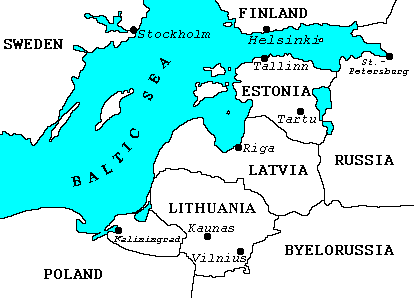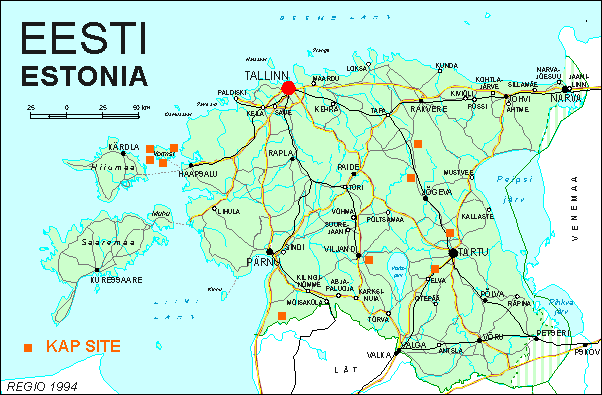
| Main building of the observatory. This building houses administrative and research offices as well as rooms for conferences and meetings. Part of the village of Tõravere is visible in the background.
Photo date 9/00, © J.S. Aber. |

| The large telescope is housed in the dome to the right. This telescope is used for spectrographic observations.
Part of the ground meteorological station can be seen in the lower left corner. Photo date 9/00, © J.S. Aber. |

| The smaller dome (upper left) in this view contains the small telescope used to measure star brightness.
Photo date 9/00, © J.S. Aber. |

| Village of Lähte, located at the southern end of the Saadjärv district. Highway 39 crosses the scene from left to right. Photo date 9/00, © J.S. Aber. |

| View toward the north with a small lake in foreground and Saadjärv visible on the distant horizon.
Photo date 9/00, © J.S. Aber. |

| View toward the northwest over Saadjärv. The lake is roughly 2 km wide by 6 km long. It is often used for small-boat sailing and wind surfing, although the water is relatively cold.
Photo date 9/00, © J.S. Aber. |

| Saadjärv is visible to the left, and a drumlin extends into the right distance. Another lake, Soitsjärv, can be seen in the upper right corner. Note the smooth shape of the drumlin ridge.
Photo date 9/00, © J.S. Aber. |

| View of Salu, a small resort community, with Saadjärv visible in the upper right corner. New vacation homes intermingle with more traditional agricultural landuse. Photo date 9/00, © J.S. Aber. |



